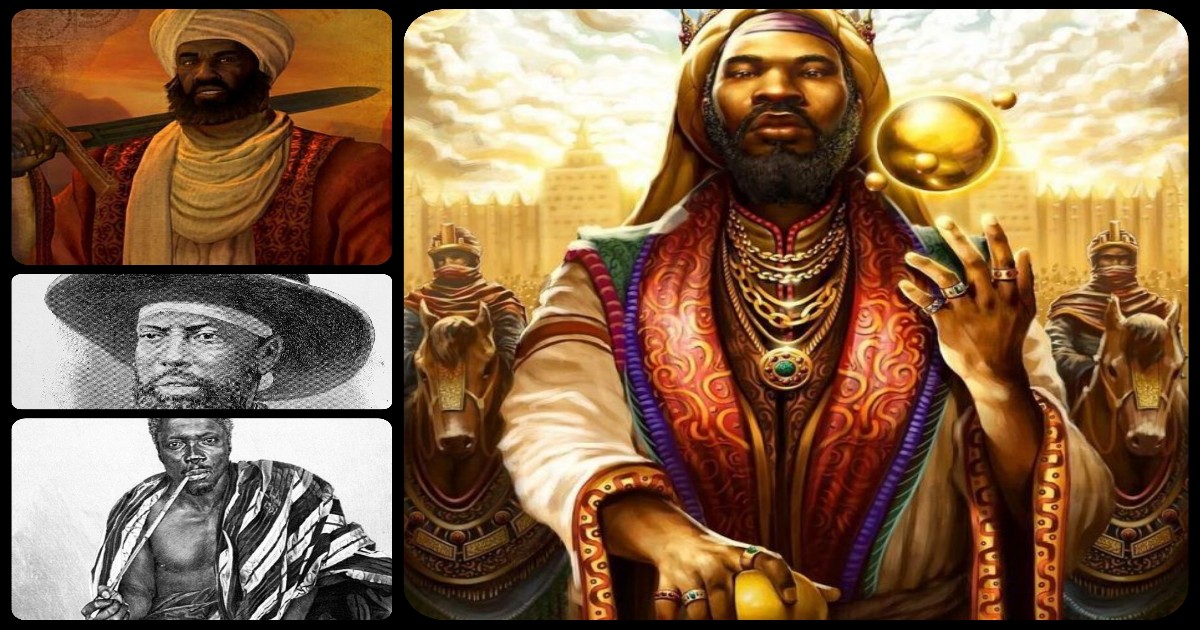Africa boasts a remarkably diverse and intricate history, punctuated by the presence of numerous significant African monarchs—kings, queens, sultans, chiefs, and emperors—who have left their indelible mark across the ages. Regrettably, not all of these historical figures have received the recognition they rightfully deserve. From illustrious warrior monarchs to pivotal advocates of political change, the annals of African history brim with captivating narratives and valuable lessons awaiting exploration.
While contemporary leaders such as presidents, prime ministers, and heads of state often cast a considerable shadow, it is important to acknowledge the influential African monarchs who have played pivotal roles in shaping their societies. Presented here in no specific order are thirteen formidable African kings who have wielded great power and influence throughout their respective reigns.
7) Sunni Ali Ber
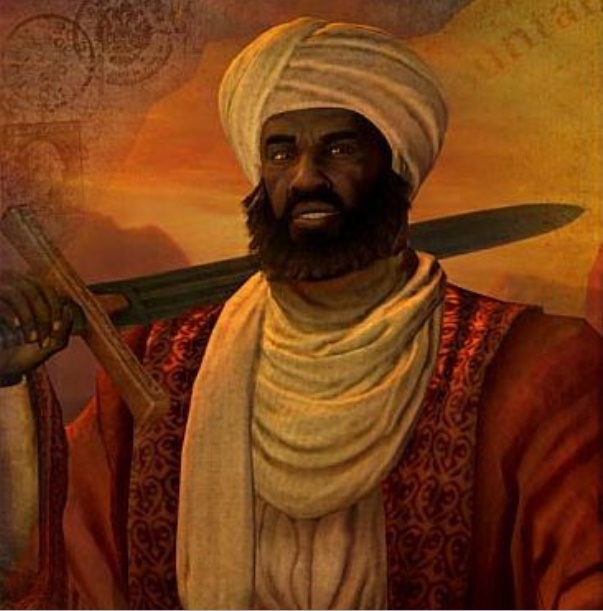
Sunni Ali Ber, known as Sunni Ali, emerged as the inaugural monarch of the Songhai Empire and the fifteenth ruler of the distinguished Sunni dynasty. His reign was marked by formidable infantry and cavalry forces that laid siege to and subsequently fortified numerous cities. Timbuktu, in 1468, and Djenné, in 1475, were among the cities that fell under his strategic control. Notably, his rule encompassed a stringent policy aimed at subduing the scholars of Timbuktu, particularly those associated with the Tuareg, a group whom Ali displaced in his quest for dominion over the town.
Under Sunni Ali’s leadership, the Songhai Empire scaled unprecedented heights, expanding its boundaries to encompass regions once under the Mali Empire and the Ghana Empire.
Sunni Ali’s governance spanned diverse communities, encompassing urban Muslims and rural non-Muslims, during a period when the coexistence of differing faiths faced challenges. Notably, his adherence to African animism alongside his avowal of Islam has prompted some scholars to categorize him as nominally Muslim while upholding his ancestral beliefs.
The circumstances surrounding Sunni Ali’s demise are subject to two versions. The Tarikh al-Sudan chronicles his demise as a drowning incident while crossing the Niger River in the waning months of 1492. Conversely, oral traditions contend that he met his end at the hands of his nephew, Askia Muhammad Ture. Following his passing, Sunni Ali was succeeded by his son, Sunni Baru, who faced opposition from Askia due to perceived deviations from Islamic faith. Askia successfully ascended the throne, thereby assuming a significant role in the empire’s trajectory.
6) Askia the Great
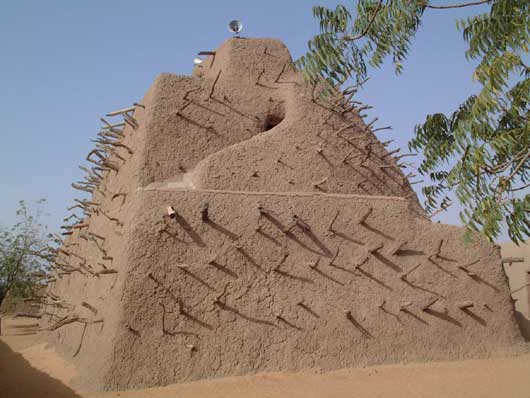
Cc: Wikipedia
Born as Muhammad Touré in Futa Tooro, Askia Muhammad I emerged as an emperor, adept military strategist, and visionary political reformer within the contours of the late 15th century Songhai Empire. Known as Askia the Great, he hailed from the Soninke ethnic lineage.
Askia Muhammad wielded his leadership to fortify and elevate the Songhai Empire into the most expansive dominion in West African history. Under his astute governance, the empire’s zenith enveloped the Hausa states, stretching as far as Kano (located in present-day Northern Nigeria), and encompassing substantial swaths of the western territory that was once part of the Songhai Empire. His strategic initiatives catalyzed an upswing in trade with both Europe and Asia, fostered the establishment of numerous educational institutions, and cemented Islam as an integral pillar of the empire’s identity.
Expanding the empire’s frontiers became the cornerstone of Askia’s reign. His sagacious endeavors propelled the empire’s borders from Taghaza in the north to the fringes of Yatenga in the south, and from the northeastern bounds of Air to the expanse of Futa Djallon in Guinea.
In contrast to merely replicating an Islamic administrative framework, Askia Muhammad introduced a novel approach by enhancing the conventional model through an unparalleled bureaucratic governance system—an innovation unprecedented in the Western African context. He also introduced standardized trade protocols, initiated rigorous monitoring of trade routes, and implemented an organized taxation structure. His reign was concluded by his son, Askia Musa, who overthrew him in 1528.
Askia Muhammad’s passing came a decade later, in 1538, and he was interred beneath a pyramid of earth, secured by wooden stakes, in Gao, located in contemporary Mali. His final resting place evolved into a distinguished mosque of immense reverence, standing as a testament to his enduring legacy across West Africa.
5) Shaka Zulu
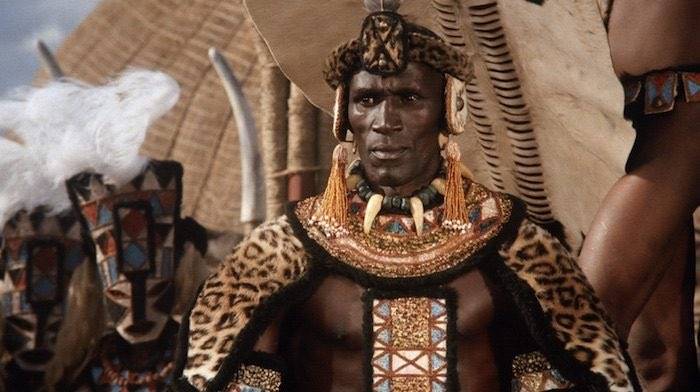
Born into the modest Zulu clan of South Africa in 1787, Shaka kaSenzangakhona’s early life was shaped by his lineage. His father, the Zulu chief, and his mother, Nandi, daughter of a neighboring clan’s chief, played foundational roles. In his youth, Shaka faced expulsion from his village by his father, leading him and his mother to seek refuge with the influential chief Dingiswayo. Here, Shaka embarked on a warrior’s journey, undergoing training and tutelage.
Following Dingiswayo’s passing, Shaka assumed dominion over neighboring tribes, ascending as the paramount figure in the region. Unceasingly honing his military prowess, he expanded his dominion through the conquest of nearby chiefdoms. His forces burgeoned, marshaling approximately 40,000 well-drilled soldiers. Shaka’s leadership was undeniably robust, albeit characterized by ruthless tactics—disobeying orders carried swift, fatal consequences, and the annihilation of entire villages was not beyond his means for impactful communication.
The passing of his mother, Nandi, left Shaka shattered. He commanded the entirety of his realm to partake in mourning her, mandating a year-long moratorium on new crop planting and forbidding milk consumption. He decreed the execution of pregnant women and orchestrated the demise of around 7,000 individuals accused of insufficient mourning for his mother. This reign of cruelty fanned the flames of discontent, and the populace teetered on the brink of rebellion.
In 1828, the culmination of grievances led to Shaka’s assassin*tion, marking the end of his reign. He was interred in an unmarked grave, sealing his chapter in history.
4) Idris Alooma
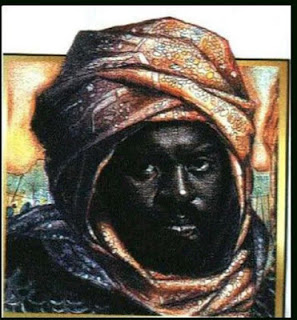
Unquestionably the preeminent sovereign of the Central African realm, the Kanem-Bornu Dynasty found its illustrious leader in Idris Alooma, who held the title of Mai or King within the Kanem-Bornu Empire. This empire predominantly occupied regions encompassing present-day Chad and Nigeria. Alooma’s reign ushered in a remarkable era of power for Kanem-Bornu, marked by his exceptional statesmanship, administrative reforms, and devout commitment to Islam.
Alooma’s dominance unfurled against an array of formidable adversaries, including the Hausa to the west, the Tuareg and Toubou to the north, and the Bulala to the east. An epic poem recounts his triumphs in a staggering 330 wars and over 1,000 battles.
Idris Alooma (c.1538-1596), who held the title of Mai of Borno from 1564 to 1596, presided over a potent and affluent Kanem-Bornu. The Empire’s coffers swelled from tributes, taxes, and commerce. In the aftermath of Songhai’s collapse in 1591, Alooma emerged as the unequivocal champion of the city’s Muslims. The empire underwent a transformation into the Bornu Caliphate, ascending to the vanguard of Islamic influence in Africa—a Caliphate that extended its reach across the continent. The sprawling capital, Ngazargamu, ranked among the world’s largest cities, with a population around a quarter of a million in 1658. The city featured an intricate layout with 660 avenues, many of them broad and meticulously aligned—a testament to advanced urban planning. Lining the high streets were trees offering cooling shade. The architectural endeavors on these streets reflected craftsmanship akin to that witnessed in contemporaneous Europe.
Alooma’s reign spanned from 1564 to 1596, as documented in the Diwan. His life met its end during the Baguirmi campaign, where he sustained mortal wounds. His final resting place became Lake Alo, located south of present-day Maiduguri in Northern Nigeria.
3) Behanzin Bowelle
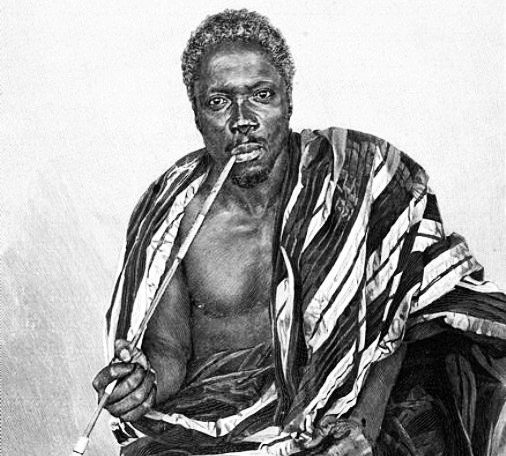
Born in 1844 within the bounds of Abomey, Béhanzin Hossu Bowelle ascended as the eleventh ruler of Dahomey, governing from 1889 to 1894. Noted as one of the potent kingdoms of West Africa, Dahomey wielded influence through its flourishing trade networks and a formidable military. During this era, Béhanzin adeptly commanded an armed force comprising 15,000 soldiers and 5,000 Amazonian women.
In February of 1890, the French seized control of Cotonou, prompting Béhanzin—now monarch following his father’s abrupt passing—to gear up for conflict. His troops engaged the French simultaneously on dual fronts: militarily in Cotonou and economically through the destruction of palm plantations in Porto Novo. However, France was resolute in its determination to annex Dahomey before potential British or German intervention. Recognizing the need to safeguard his sovereignty, Béhanzin continued augmenting his armed forces in anticipation of renewed hostilities.
Disavowing a treaty forged with France by his father, Glèlè, in 1868, Béhanzin set the stage for the ensuing war. In 1894, Colonel Alfred-Amédée Dodds, a Senegalese mulatto, vanquished Béhanzin with the support of formidable French military might. Béhanzin, keen to prevent the massacre of his people, submitted himself to Dodds, refraining from formalizing his surrender through the signing of a national instrument or treaty. As a result, Dahomey fell under the protective mantle of France, eventually evolving into a French colony.
Exiled to Algeria, Béhanzin’s life persisted until 1906 when he passed away, marking the conclusion of a life characterized by tumultuous leadership and resistance.
2) Menelik II
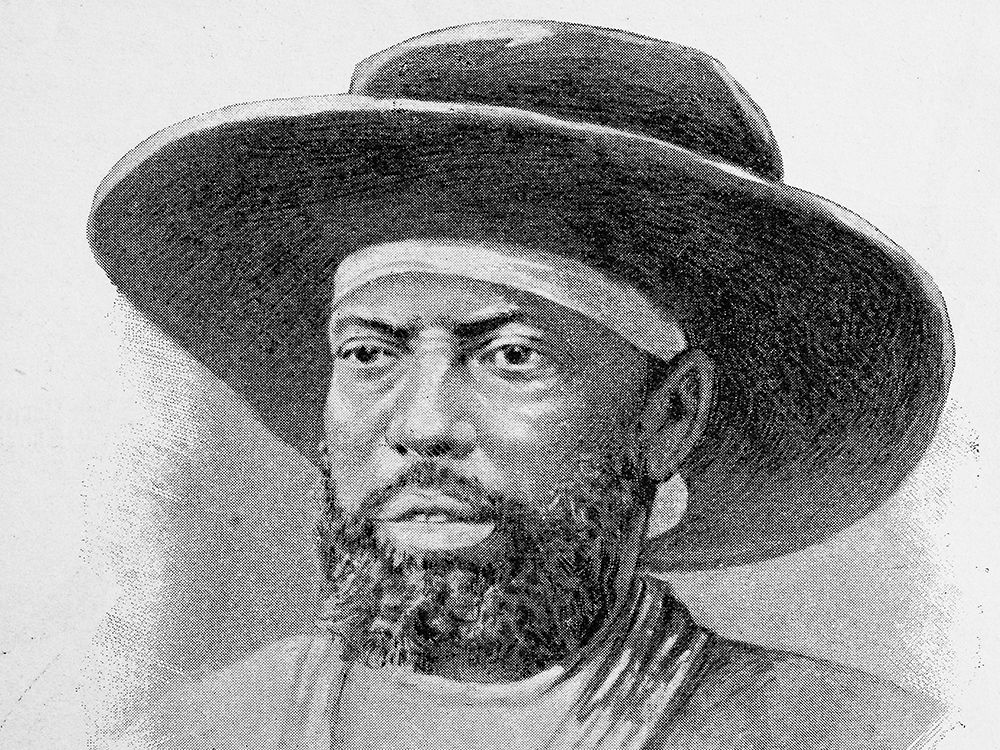
Reigning as Emperor of Ethiopia from 1889 until his demise in 1913, Menelik II presided over a transformative era. At the zenith of his internal authority and external renown, he successfully culminated the process of territorial expansion, thus fashioning the contours of a modern empire-state by 1898. Menelik’s historical legacy further shines through his leadership during the First Italo-Ethiopian War, where his Ethiopian forces triumphed decisively in the pivotal Battle of Adwa against the Kingdom of Italy.
Emperor Menelik’s tenure brought about a metamorphosis in Ethiopia. Collaborating closely with instrumental ministerial advisors, he laid the groundwork for crucial modernization endeavors. Externally, his resounding victory over Italian invaders elevated his stature on the global stage. The Battle of Adwa heralded international recognition of Ethiopia’s autonomy, manifesting as diplomatic representation at his court and the delineation of Ethiopia’s territorial boundaries vis-à-vis neighboring colonies.
Menelik’s realm saw expansion to the south and east, annexing territories such as Kaffa, Sidama, and Wolayta, alongside other kingdoms. In the latter years of his rule, he established the inaugural Cabinet of Ministers, an administrative innovation designed to enhance governance within the Empire. Trusted and widely respected nobles and retainers were appointed to these ministerial roles, a practice that endured beyond Menelik’s era, spanning the brief reign of Lij Iyasu and extending into the tenure of Empress Zewditu.
1) Mansa Musa
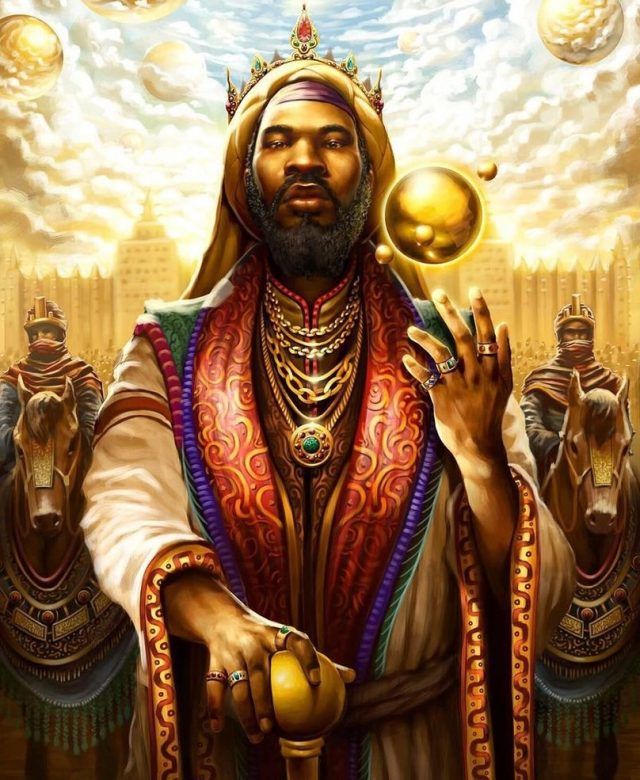
In the seventeenth year of his rule, in 1324, Mansa Musa I of Mali embarked on his renowned pilgrimage to Mecca, an expedition that illuminated the world to Mali’s astonishing riches. His presence left a significant imprint on Cairo and Mecca.
Departing from his capital Niani situated along the upper Niger River, Mansa Musa’s journey took him through Walata in present-day Mauritania and Tuat, now in Algeria, before arriving in Cairo. Accompanied by an impressive entourage of 60,000 individuals, which included a personal retinue of 12,000 slaves, all clad in lavish brocade and Persian silk, the emperor himself rode astride a horse. Preceding him were 500 slaves, each bearing a staff adorned with gold. Furthermore, a baggage convoy of 80 camels transported 300 pounds of gold each.
Historian al-‘Umarī, who visited Cairo twelve years following the emperor’s arrival, discovered the city’s inhabitants, with an estimated population of one million, still extolling the virtues of Mansa Musa. The emperor’s opulent expenditures had been so generous that they flooded the Cairo market with gold, leading to a depreciation in its value that persisted even a dozen years later.
Under Mansa Musa’s reign, the city of Timbuktu flourished as a pivotal hub of commerce, fostering caravan links with Egypt and other vital trading centers across North Africa. His legacy extended beyond territorial expansion, which stretched from the Atlantic to Nigeria, as he intricately wove a sprawling trade network encompassing gold and salt. Additionally, he embarked on ambitious construction endeavors, transforming Timbuktu into the epicenter of West Africa, if not the entire world during that era.
